There are a lot of ways to beat the heat in summertime when you’re traveling in an RV. The most obvious is simply to head to a cool place when a heat wave hits. Afterall, your home has wheels!

.
But there are other things you can do to prevent the sun from baking the interior of your home, even if you don’t have electrical hookups to run the air conditioner. And if it does get unbearably sultry, and you do need to run the A/C from a portable gas generator, there are some tricks we’ve learned to make it possible…
GO SOMEWHERE COOL – In the MOUNTAINS, FAR NORTH and/or NEAR WATER
Cooler places are located either in high elevations, and/or up north, and/or by a big body of water — the ocean or a lake.
This may seem simplistic, but places in the eastern states like Acadia National Park in Maine, where you might get out on a boat, or the White Mountains in New Hampshire where you might catch a cool train ride to the top, are good bets.
In the west, the key to temperature is elevation. Many folks who are new to the western states are surprised to find out that there can be a 20 degree difference in temperature between two places that are just 150 miles apart.
For instance, Phoenix, Arizona (1,100′ elevation), is 20 degrees hotter than Flagstaff, Arizona (6,900′ elevation). And the North Rim of the Grand Canyon (9,000′ elevation), (about 200 miles further away) can easily be another 10 degrees cooler than that.
Likewise, Stanley, Idaho is about 15 degrees cooler than Boise, Idaho. It is just a few hours north but is 3,500′ higher up.
In Utah, Zion National Park (3000′ elevation) is 10 degrees hotter than Bryce National Park (9,000′ elevation), and if that’s still a little toasty, a run up to Cedar Breaks National Monument (10,000′ elevation) will be just a bit cooler still.

Camping near trees in the mountains is pretty cool!
Generally, you can’t go wrong in the Rocky Mountains, and a trip to Ouray, Colorado (7,700′), or Banff National Park in Canada will definitely be much cooler than most other places when a heat wave buries North America.
Similarly, the coasts enjoy wonderfully cool sea breezes. The whole west coast, from San Diego to the Olympic Peninsula in Washington is much much cooler than the communities that lie directly inland (over the coastal mountains), 150 miles from the coast.

Life is definitely cool at the beach (Lake Pend Oreille, Sandpoint, Idaho)!
Bandon, Oregon, on the Pacific coast is 15 degrees cooler than Bend, Oregon, which is in the inland desert, baking away behind the range of coastal mountains that stop the flow of cool air coming in from the Pacific.
If the ocean isn’t easily accessible, spending time near a big lake can do the trick.

Want to get cool? Find your inner child and play in the water with a toy wagon.
Large lakes offer “sea breezes” in the afternoons, and many lakeside towns have fantastic waterfronts, like Seneca Falls, New York, in the Finger Lakes, and McCall, Idaho, on Payette Lake.
GO SOMEWHERE COOL IN TOWN
The worst part of the day is the late afternoon and evening, and that’s a great time to get out of the rig. A late afternoon or early evening outdoor picnic under a shady tree in a place with a breeze or cool grassy lawn will work wonders. A trip to the air conditioned library or bookstore with a little cafe inside can be a delightful change of pace.
A hot afternoon is a perfect time to take in a matinee at the local cinema. If the laundromat is air conditioned, the heat of the afternoon might be the time to get that chore done, or if your laundry is already clean, doing the week’s grocery shopping could give you an hour or two of air conditioned respite at the supermarket.
HOW TO RUN a 15K BTU RV AIR CONDITIONER with a YAMAHA 2400i GENERATOR
Sometimes, it’s just too darned hot to survive without air conditioning, and in that case it’s really nice to turn it on.
We boondock every night, and we have just 490 watts of solar power on our RV roof and 434 amp-hours of battery capacity in the basement.
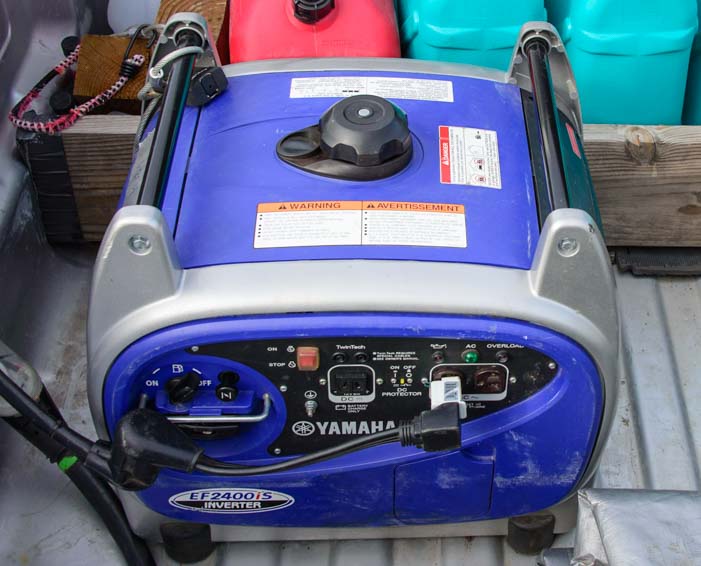
Our generator gets a good workout a few times a year running our 15k BTU air conditioner.

This RV roof AC unit takes some oomph to run!
So, the only way we can get air conditioning in our trailer is to drag out our Yamaha 2400i gas generator and set it up to run our Coleman 15,000 BTU air conditioner.
Some folks say this can’t be done, but we’ve been doing it for years.
We use a variety of adapters to plug the generator into the shore power outlet on the outside of the rig.
To get from the 15 amp outlet on the generator to our shore power outlet on the outside of our trailer, we could use one adapter plus the shore power cord:
However, when we first bought our trailer, we stayed at an RV park that had a 30 amp pedestal that didn’t match our 50 amp shore power cord, so we had to buy an adapter. Making good use of that adapter with our generator now, we use two adapters plus our shore power cord when we connect to the generator:
- 15 amp Male to 30 amp Female dogbone adapter
- 30 amp Male to 50 amp Female dogbone adapter
- 50 amp RV Shore Power cord
When the generator is powering the RV this way, the generator supplies power to the converter inside the trailer (or inverter/charger), which charges the batteries as efficiently as possible using a multi-stage charging algorithm (if the converter or inverter/charger is a “smart” charger).
Our 2400 watt generator is able to power our 15K BTU air conditioner just fine. However it sometimes takes a little coaxing to get it to fire up because there is a big spike when the air conditioner’s compressor first turns on. Over the years, we’ve learned that the trick to persuading it to run is the following:
- Run the generator for a few minutes with no load and make sure it is warmed up
(also make sure the hot water heater and fridge are set to “gas” and no other electrical appliances are running) - On the air/heat control unit, set the Fan button to High On
- Set the System button to Fan and let it run for a few minutes
- Set the System button to Cool and listen to the compressor come on

Make sure the genny is warm and let it power the fan on high for a while first… THEN switch on the A/C.
If the last step trips the breaker on the generator, set the System button back to Off, restart the generator and try again.
On a few occasions it has taken us 2-3 tries to get the air conditioner going. However, most of the time it fires up on the first try.
We always run it for 4-6 hours when we turn it on, and it purrs along just fine. However, we run the air conditioning just a few days each year. The rest of the time we stay cool using other means.
To keep the gas in the generator (and in the gas can) fresh and to ensure quick starts after storage and to prevent gumming and varnish, Mark puts the stabilizer Sta-Bil Gas stabilizer in the gas.
POSITION THE RV
— BIGGEST WINDOWS FACE NORTH and SMALLEST WINDOWS FACE WEST
The toughest time of day is the afternoon when the sun is in the southwest and western sky and is slowly baking the RV. Sometimes it seems to take forever for the sun to set while everything inside the rig quietly fries!
No matter what the wall and roof insulation R-factor is for an RV, the windows are where all the heat comes in. So, keeping them shaded as much as possible throughout the day makes all the difference in the world.
Every rig has a different arrangement of windows, but if you can position the biggest ones to face north or east and the smallest ones (or the wall with no windows if you have one) towards the west and southwest, the difference to the interior temperature will be astonishing.
If there is a way to block the afternoon sun entirely by parking next to shade trees or a building, that is even better.
SET UP THE RV AWNING
Even if the awning will only shade a small part of the RV’s walls and windows for a few hours of the day, this is still helpful! When an RV wall gets hot, you can feel the warmth on the inside of the rig. And you can especially feel it in the cabinets. There’s nothing like a hot bottle of olive oil in the kitchen pantry!

Even though it’s shading just one small window, the awning is keeping the whole wall cool.
Modern rigs have wonderful powered awnings, but ours is the old fashioned manual crank type of awning. The other day we heard two RVers complaining about how putting these old awnings out was really difficult and was a two man job.
It’s actually not that bad, and Mark does it by himself in just a few minutes. Here are the steps:

1. Unscrew the knob on the back of each awning arm.

2. Open the clip right above the knob on each awning arm

3. Use the awning tool to open the lever on the roller
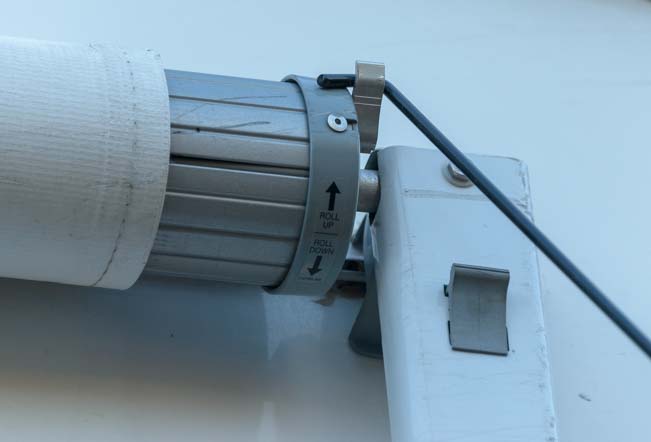
4. Pull down on the lever to open it.

The roller lever is now in the down position.

5. Use the awning tool to pull out the awning by grabbing the webbing loop

6. Pull the awning part way out with the awning tool

7. Grab the webbing and pull the awning out the rest of the way
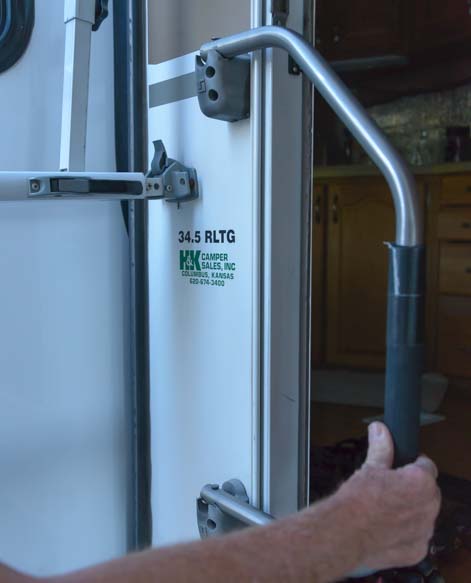
8. Close the RV door handle to get it out of the way

9. Slide out the awning arm in its track

10. Pushing down on the awning arm to keep the canvas taught, tighten the knob.

Do this on both sides

11. Open the big awning handle to raise the awning up.
If it looks like it might rain, position one side of the awning a little lower than the other so the water will drain off of the awning.
When Mark closes up the awning for travel, he puts velcro straps around the arms to keep them from accidentally opening as we travel.
Another neat awning trick is to get an awning shade extension that drops from the edge of the awning to the ground. This provides shade from touching the rig even when the sun is at a low angle.
INSULATE THE WINDOWS and HATCHES INSIDE
The day/night shades in most RVs are great for reducing sunshine in the rig, but do little for eliminating the heat that pours in through the glass and metal frame.

Pulling down our night shades doesn’t block much direct sunlight.
We cut Reflectix, which is a bubble wrap kind of aluminum foil that comes in a huge roll, to fit each window (a pair of scissors is all you need). We labeled each piece for the window it fits into.

Reflectix picks up where RV insulation leaves off…
We raise the RV’s day/night shades, press the piece of Reflectix against the window, and then lower the shade to hold the Reflectix in place.

A layer of Reflectix behind the shade blocks all the sun!
In our big rear window we jam a pillow under the large piece of Reflectix to hold it up. Otherwise it would drop to the floor.
If we are going to leave the rig for a while, we close all the windows and put an RV Vent Insulator in each of the roof vents. It is amazing to come home after many hours of running around to find that the rig is still fairly cool inside.
However, if we are planning to stay home, we don’t like to live in a tomb, so we have another strategy using fans and open windows that allows us to have some ambient light coming in…
STAY COOL WITH FANS
We rely on two different types of fans to stay cool.
Vent Fans
We have a Fan-tastic Vent Fan in two of our trailer’s four roof hatches. These are designed to push a maximum amount of air in or out of the rig. We set them to push the air out of the rig, and then we open the windows on the shaded side of the trailer to let the cool air from outside come in.

Fan-tastic Fan in an RV hatch
If we were to replace our Fan-tastic Fans, or if we wanted to upgrade another hatch to one of these or a similar type of vent fan, we would choose a very simple model that does just the basics.
Our Fan-tastic Fans are whiz-bang models with remote control, rain-sensing, auto-opening, auto-closing, slicing and dicing and who knows what else. Unfortunately, they have minds of their own, and they won’t listen to reason.
They auto open and auto close at the weirdest times, they don’t necessarily know when it’s raining, and they make it impossible for the mechanically challenged (ahem…me) to turn them on or off or to open and close them. There are way too many buttons that do way too many different things.
Also, Mark has had to rebuild various parts of both of these fans, and by the colorful flow of expletives I heard him let loose on these jobs, I would gather that it was not easy.
Portable Fans
While vent fans help move fresh air through the rig by forcing hot air out the vents and pulling cool air in through the windows, portable fans are a godsend to aim right at you when you start reaching the boiling point.
We have a standalone, portable 12 volt Fan-tastic Endless Breeze Fan (and DC extension cord) so we can move it around the rig.
We got this fan in Quartzsite one year for our (not yet purchased) sailboat and we’ve used it a lot in the years since then. But it is extremely noisy. Forget trying to sleep with it running nearby! It’s also kind of silly to spend so much money on a 12 volt fan when a smaller and quieter 120 volt fan will do just as good a job, if not better, for a fraction of the cost. All you need is an inverter.
Our little portable fan is terrific, but there are lots of portable fans in all kinds of styles that are just as good.
MAKE ICY DRINKS!
Last of all, there’s nothing that can cool down your body temp like an ice cold drink. A smoothie in a blender tastes wonderful and can bring your core temp down quite a bit. We make ice using old fashioned ice cube trays in our freezer, and we use a few cubes and frozen fruit in our smoothies to ensure they are as cold as possible.
Our Osterizer blender draws 1000 watts, which is well within the limit for our 2,000 watt pure sine wave inverter.
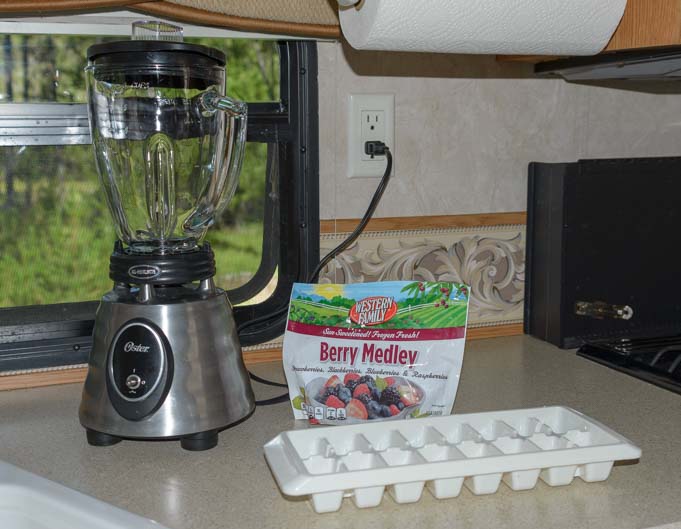
Smoothie time – Get cool with lots of ice and frozen fruit!!
Those are a few of our tips for surviving the dog days of summer in our RV without hookups. It can take a little finagling and strategy, but these things have kept us cool in our trailer for ten summers now!
Subscribe
Never miss a post — it’s free!
Below are some of our most POPULAR POSTS (also in the MENUS above)
Buddy - A Journey in Spirit - The story of an event that changed our lives forever. ARTICLE INDEXES- RV Tech Tips Articles - A one page index of links to all our RV Tech Tips, RV Upgrades & RV Maintenance articles.
- RV Lifestyle Tip Articles - An index of links to all our RV Lifestyle Tips (finances, boondocking, major repairs, work/jobs, etc.)
- Solar Power Articles - Overview and tutorial articles for how to design and install solar power on an RV or boat
- Product Reviews - An index of links to all of our Product Reviews
- Basic RV Tool Kit - What tools do RVers need? Here's a list of essentials, from tire changing to electricity, plumbing & more
- RVing Tips & Tricks - Tips and tricks to make RVing easy
- Reese Goose Box - Reclaim your TRUCK BED with air ride smooth towing + How to hitch and unhitch!
- RV Heater Installation - Step-by-step guide for how to select and install a vent-free propane heater
- CargoBuckle Ratchet Straps - These retractable straps make it a CINCH to tie down a side-by-side, motorcycle or ATV
- How to change a dually truck's inner rear tire - Tips for changing the inner rear tire on a dually truck.
- EASY SOLAR POWER UPGRADE - We TRIPLED our factory installed solar power output for CHEAP
- B&W Fifth Wheel Hitch - Why we chose this hitch for our fiver plus an easy 5th Wheel Hitch Installation Guide.
- Demco 21k Recon Fifth Wheel Hitch - This fifth wheel hitch mounts on a gooseneck ball in the truck bed!
- Increase Your RV Storage Space - Add precious storage space at the RV dinette with storage benches!
- Buying a Truck - Which options turn an ordinary diesel pickup into a massive TOWING MACHINE?
- Battery Charging Primer - The low-down on RV and marine batteries and how to charge them effectively.
- Which Solar Panels are Best? - Which is better: FLEXIBLE or RIGID?? 12 or 24 volt?? monocrystalline or polycrystalline???
- RV Solar Power Made Simple - An overview of how solar power works on an RV
- Trailer Disc Brake Conversion - Massively improve trailer stopping power with electric over hydraulic disc brakes
- Truck Engine Upgrade - How we improved performance, towing power and fuel economy with an engine tuner
- How to Defrost an RV Refrigerator in 20 Minutes - It is actually a cinch to defrost an RV fridge!
- Solar Charge Controllers - Understand and OPTIMIZE your RV / marine battery solar charging
- Wet Cell vs. AGM Batteries - Which is better, why we upgraded, PLUS wiring tips to optimize battery life
- Suspension Overhaul on a 5th Wheel - A Total Re-design for our Suspension: Hangers, springs, shocks & more!
- Can you run SOLAR POWER and SHORE POWER together? - What happens when you're on solar and you plug in?
- Converters, Inverter/Chargers and Engine Alternators - How do these battery charging systems REALLY work?
- RV Budget, Costs and Expenses - A detailed analysis of RVing expenses over 7 years of RVing full-time
- RV Extended Warranties - Is an RV warranty a good investment or a waste of money? Our personal case history.
- Working and Living on the Road - How do you make money on the road and who lives this nomadic lifestyle?
- Sell or Lease the House? - Is it better to SELL or LEASE your house when you start a life on the road?
- Mexican Dentists - Are the Dentists in Mexico any good? Just how cheap are they? Here are our PERSONAL experiences.
- How An RV Warranty Saved Our Bacon - Literally! - One repair on our RV practically paid for our RV Extended Warranty
- Still Smiling After 3 Days at the RV Repair Shop - Why? Our RV Warranty put us $2,000 ahead of the game!
- 5th Wheel Suspension Replacement - When our trailer's suspension failed, we $aved $$$ Thousands getting it replaced.
- RV Toilet Replacement - Our RV toilet quit flushing (ugh!) but our RV warranty saved us again. Now we're $6,700 ahead!
- RV Boondocking - Tips for how to live in an RV off the grid
- Which RV Is Best for Full-Time Living? - Transitioning from a house to an RV - Which RV makes the best home?
- Truck Camper Pros and Cons - The GOOD, the BAD and the UGLY!
- Full-time RV Lifestyle Tips - Full-time RVing Logistics - Mail, Domicile, Insurance, Warranties, Saving Money at RV Parks
- Toy Hauler Life - What's it like to live in an OPEN BOX Toy Hauler?
- What are the MOST IMPORTANT FEATURES in a Full-time Fifth Wheel? - For anyone planning to live in an RV!
- Internet & Phone Access for RVers - An inexpensive, minimalist solution for internet access on the road
- RV Dump Stations & Composting Toilets - How to do the dirty deed at the RV dump PLUS RV Composting Toilet tips
- Choosing a Trailer for Full-time RVing - Why the payload capacity is so important
- Learn RVing the Fun Way!! - Go Cheap, Go Small, Go NOW and have a blast in little RV!
- Free RV Campsites - Resources for locating campsites for boondocking
- Glimpses of the Full-time RV Life - Anecdotes from the road and essays about living the RV dream.
- Travel Photography Tips! - All the cameras, gear, books, blogs and tools we used to learn to take great pics!
- Gear Store - A list of the goodies, equipment and gear we've found useful in our RV lifestyle!
Our most recent posts:
- Out with the Ram Diesel truck and In with a…?? 01/31/25
- Beehive Trail in Arizona – A “Mini Wave” hike by Lake Powell 07/19/24
- Reese Goose Box Review: 20K Gen 3 TESTED + How to Hitch 06/27/24
- Lake Powell – Heart of Glen Canyon National Recreation Area 05/10/24
- Quick Release Pull Pins for Fifth Wheel Landing Jacks – YES! 05/03/24
More of our Latest Posts are in the MENU above.


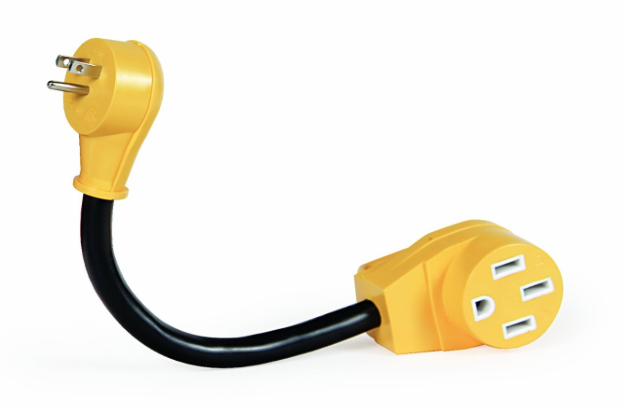
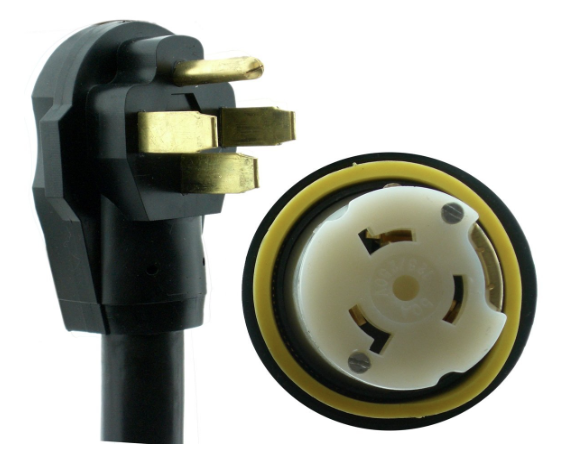
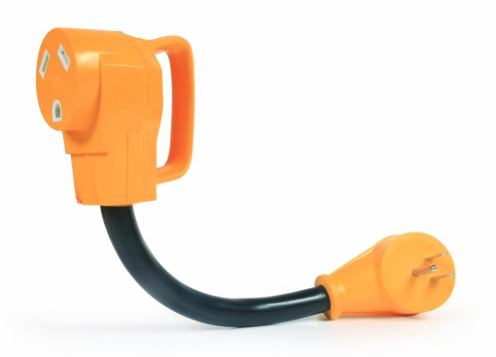


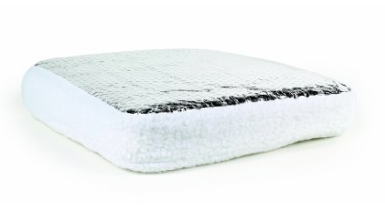

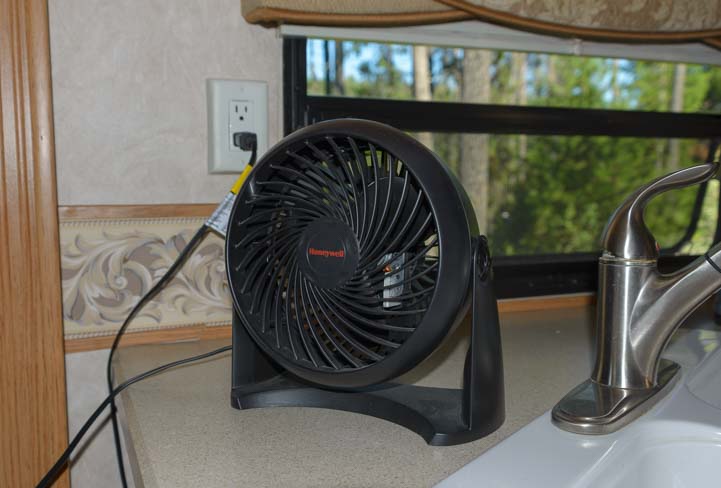
Hi you two, We are new-ish (18 mos) full timers in a 33′ Class A and love your blog. We don’t like to use A/C much and follow pretty much the same rules you do. Wanted to let you know that we got a tower fan- ~ 3.5-4′ tall (from Costco about $40 I think) which is wonderful. It comes with a small personal fan (about 1′ tall). Neither use much electricity.
I bet that tower fan blows a lot of wonderful cool air on you, and how neat it came with a personal fan too. Great idea, as long as you can find a storage place for the tower fan when it’s not in use. Thanks for sharing and happy travels!!
Great post, in a couple of years we will get on the road and chase 68-70 degrees. I guess for summer it will be above 6000 feet for sure.
Thanks for the inspiration to avoid perspiration! LOL
You guys are the best!
Thanks for reading! Hanging out above 6000 feet really helps, although the foggy northern coasts can be super cool too. It’s all good, even when it gets hot!!
We got our little fan at Home Depot *and* it plugs into a USB port on our laptop. We charge the laptop via solar (420 watt panel — only 300 watt PSW inverter) and it runs the fan all night long. We have found the ‘white noise’ from the fan helps us both to sleep better and, of course, the cool moving air is a total blessing as well. Now if we could just get the laptop to do its computer duties, we’d be *very* happy.
Very creative!! Must be something like this fan. Interesting you have such a small inverter. We lived on our boat exclusively on solar power and did almost everything with a 600 watt pure sine wave inverter. It was totally sufficient! We had a bigger modifed sine wave inverter for the microwave, but that was just a few minutes once or twice a day. The rest was done with the little guy!!
We’ve spent the past six summers on Lopez Island and the temperatures are perfect. I don’t think there’s anywhere better than the Pacific Northwest if you want to stay cool in the summer! We’ve been much hotter in Florida in the winter or in the Southwest in the fall or spring. That’s when tips like those you suggested come in handy for us (great suggestions!). I’m also partial to a gin and tonic on a hot evening. Much more refreshing than a glass of wine or a beer. 🙂
The northwest coast is a beautiful place to spend the summer. How wonderful to be on Lopez Island! Another cool drink I love is simply soda or seltzer water with the juice of a key lime squeezed into it. Very refreshing!!
Well, folks, another timely article, filled with tips, tricks, and other good stuff! Always pick up some good and new info from you both, along with your dazzling pics of the areas you are in.
You must have chased Paul and Nina, of “WHEELING IT”, out of McCall, as they stayed there for specialized Vet care for their canine child, and recently left, on their way to Michigan. Although they have a 40′ Motor Home (The Beast), Nina is a great writer, as are you, “M”. Yes, your tag-a-long husbands are super companions, too.
We, like you folks, have similar outfits, 5vers plus Duallies, so their Beast is not that long when compared to our rigs! But you’ve probably ran into Paul and Nina somewhere in your travels.
Nice index, by the way, as your articles are all saved, for future use.
Also have to admit, that we also enjoy your other reader’s comments, as they provide useful information, as well as sharing our common admiration, for your wonderful articles and pictures!
Keep em coming, “M & M”, and we’ll keep soaking them up!
Thank you, Glen & Bette. Unfortunately, we are so busy in our lives that we don’t have time to follow any RV blogs on a regular basis. I had no idea that Nina and Paul were in McCall, although a fellow RVer had told us their dog had been sick and their summer travels had been delayed. I’m so sorry we missed them. We’ve never met, although we’ve corresponded several times over the years, and we both admire each others’ blogs. Many RVers ask us if we know them, and one couple we met kept inadvertently referring to Mark as Paul! We have much in common with them, and it would be a blast to spend some time together. Maybe somewhere down the road in the future!
All these big full-timer rigs like our little buggy are definitely big beasts in their own way, but we sure do love ’em when they’re opened up for comfy living! Happy travels and thank you so much for appreciating our photos and stories!!!
I read your “beat the heat” blog with great interest. Our two Dometic air conditioners really struggle in the SW Missouri heat to keep our 40′ 5th wheel as cool as I’d like, so I bought a couple of rolls of Reflectix to install on our windows. Just today, though, as I was perusing an RV facebook group, there was a post, along with several comments, saying that putting that on the inside of one’s windows leads to the overheating and deformation of the window seals and possibly discoloration of the surrounding trim, so it should be installed on the outside. Deciding to follow Abraham Lincoln’s admonition that “you can’t believe everything you read on the internet,” I thought I’d ask you if you’d noticed anything like that in relation to your windows. I highly doubt it, or you would’ve reported it in your post. By the way, you’ve got my wife and me already planning our journeys next summer to include Glacier, Banff, and all points around and in between. Keep up the great work!
Thank you for reading our blog, David. The internet is a crazy place, and as old Abe knows, experts of all kinds express virulent opinions, whether they are knowledgeable about their subject or not. We put the Reflectix in our windows when the sun in shining on them on hot days. We take it out otherwise. It isn’t fun to live in a tomb!! We’ve never seen any discoloration or delamination or melting of the window glass. Some people leave their Reflectix in their windows 24/7, year in and year out, and perhaps that is where these comments are coming from. Have fun up in Canada next year — what a spectacular place that is!!!